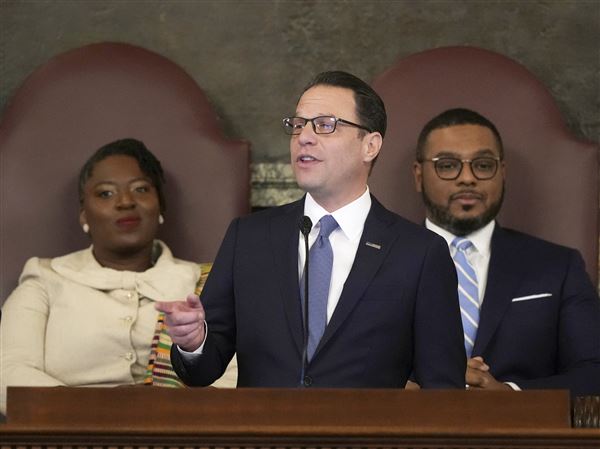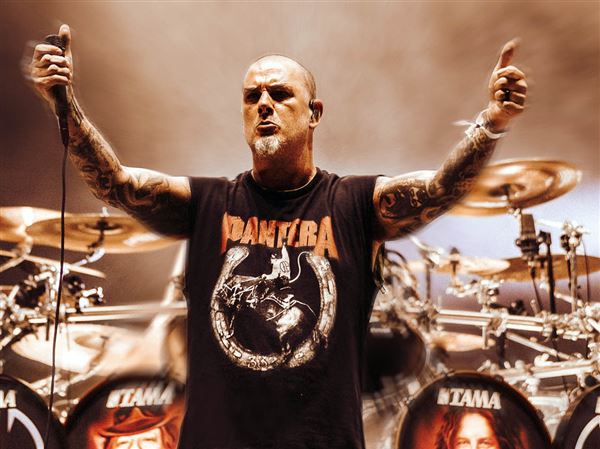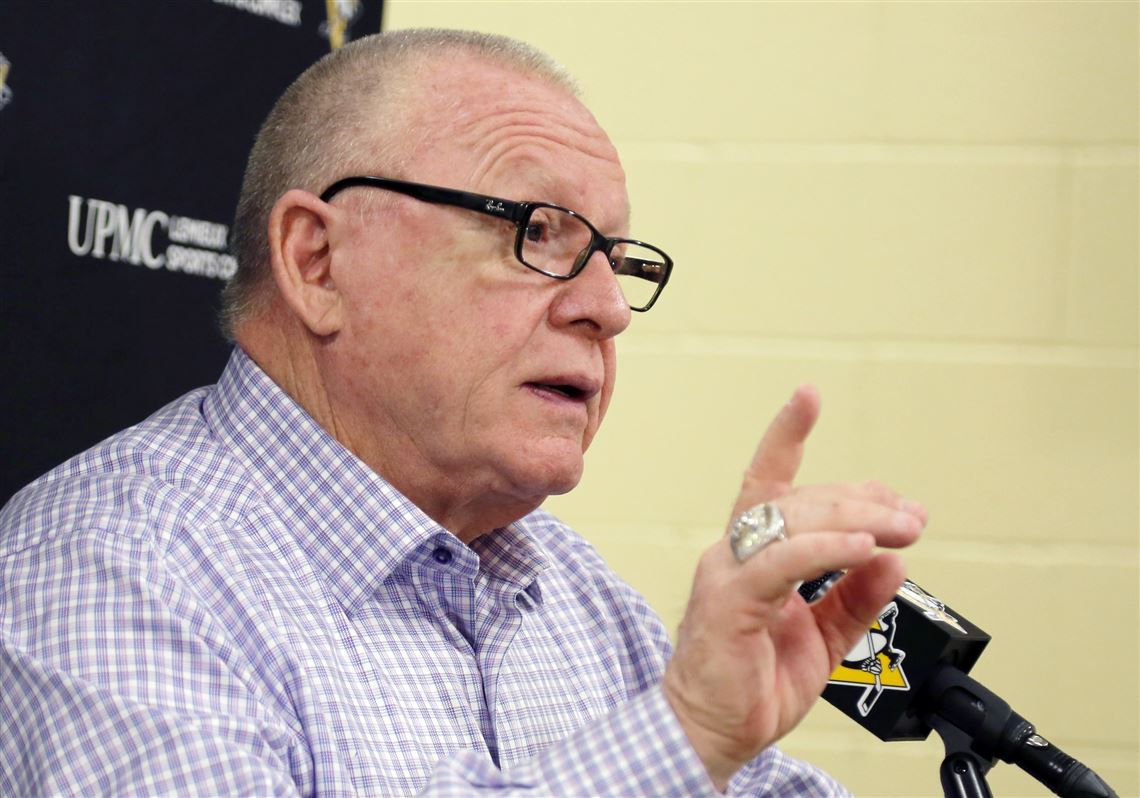Next up in our series of Penguins primers, in which we’ve been looking both back and ahead at various aspects of the team, is the GM.
Let’s start this off with a disclaimer: Jim Rutherford has as many Stanley Cups (two here in Pittsburgh and another in Carolina) as I had cups of coffee this morning. He is obviously among the league’s best.
Over the past four years, many of his decisions — especially his boldest ones — have paid off for the Penguins, leading to annual expectations that they’ll be hoisting a heavy trophy. Thus, when the Penguins come a couple of rounds short of a three-peat, there will be nitpicking.
Now, the Jack Johnson signing is not exactly popular, and the Derick Brassard deal did not pay dividends last postseason. Some fans are still upset Marc Andre-Fleury is defending nets in the desert. Others wanted a shakeup after watching the Capitals win the Cup.
But Rutherford’s tweaks, some of them necessitated because those two championships priced key contributors out of their budget, put the Penguins in position for another Cup run last season and, barring injuries to their big guns, should again have them in the hunt in 2018-19.
Plus, let’s not forget, winning the Stanley Cup is really freaking hard.
So, keep all that in mind as I rank, from worst to first, the 11 most significant moves he has made since last year’s expansion draft:
11. Signing defenseman Matt Hunwick: We all can agree this one did not work out. Hunwick signed a three-year, $6.75 million contract last offseason but couldn’t crack the playoff lineup. Hunwick is now a goner… thanks to another move that made this list.
10. Trading for forward Ryan Reaves: The thought process was logical, adding some big-time brawn to a forward group that otherwise consisted of a lot of speed and skill. But Reaves proved to be a poor fit after the Penguins acquired him from the Blues during the 2017 draft. He contributed just eight points in 58 games while piling up 84 penalty minutes and a minus-9 rating before the Penguins traded him away at the deadline. The record will show Rutherford gave up a first-round pick to get Reaves, but the price was not that steep considering they actually only dropped 20 slots in the draft (the Blues gave up their second-round pick and the Penguins threw in Oskar Sundqvist).
9. Trading for center Riley Sheahan: A couple of weeks into the 2017-18 season, Rutherford acquired Sheahan from the Red Wings by sending them Scott Wilson and swapping a 2018 third-round pick for a fifth-rounder. Sheahan was unable to replace everything that former third-line center Nick Bonino brought to the mix, ultimately leading to Rutherford trading for Brassard a few months later. Still, many teams probably wish they were deep enough to have someone like Sheahan playing on their fourth line, which he will often do in 2018-19.
8. Bringing back center Matt Cullen: The Penguins filled out their depth chart by signing Cullen, a strong penalty killer and locker-room leader during their last two Cup runs, in addition to fellow forwards Derek Grant and Jimmy Hayes. Cullen is the most notable, of course, because of that history and also because he will turn 42 in November. His age has led to some skepticism in these parts, but at $650,000, there is little downside here if Father Time finally trips him up.
7. Signing Johnson in free agency: Signing Johnson, a former No. 3 overall draft pick who is minus-109 in his career, to a five-year contract could end up being a big blunder. But there is also a chance that Johnson could end up being a steal at just over $3 million a year. So, without having seen Johnson skate with Sidney Crosby and Evgeni Malkin and the gang, I’ll conservatively slot this near the middle.
6. Trading for defenseman Jamie Oleksiak: Rutherford helped make up for the failed Hunwick signing by acquiring Oleksiak from the Stars in December for a conditional fourth-round pick in 2019. Big and physical and willing to drop the gloves when warranted, Oleksiak impressed the Penguins enough to earn a three-year contract worth $2,137,500 annually — a little less than they were to pay Hunwick.
5. The deadline deal for Brassard: In what Rutherford called “the most complex trade I’ve made,” the Penguins in February landed Brassard from Ottawa in a three-team deal with Vegas. The trade, initially rejected by the NHL because it wasn’t cap-compliant, involved three NHL players, three prospects and four picks. The Cliff’s Notes version is that the Penguins gave up defenseman Ian Cole and bruising forward Ryan Reaves to get Brassard, who prior to the trade had totaled 420 points in 712 career games. Brassard soon would sustain a lower-body injury that lingered throughout the playoffs, and he contributed just one goal and two assists in 10 playoff games. The loss of Cole, meanwhile, contributed to the collapse of the penalty kill. The tricky trade did not pay off last postseason, but it could this season, if Brassard is healthy and able to get comfortable with skilled potential linemates such as Phil Kessel or Daniel Sprong. This move could end up climbing to the top of this list by the time June rolls around.
4. Trading Hunwick, winger Conor Sheary: Rutherford totally redeemed himself — or came close to it — by dealing Hunwick, along with Sheary, to the Sabres this June. That deal not only freed up $5.5 million in cap space, it also got the Penguins a 2019 draft pick.
3. Extending winger Bryan Rust: What’s not to like about locking up a young, versatile, clutch forward for $3.5 million a year?
2. Protecting Matt Murray in the expansion draft: The NHL expanding to Vegas put the Penguins in a tricky spot, having to choose between Fleury, a fan favorite and the best goalie in franchise history, and Murray, the man standing in net for the last two Cup-clinching wins. But sentiment aside, leaving Fleury unprotected (and giving a second-round pick to the Golden Knights to ensure they took him) was a no-brainer. Murray was a decade younger, a couple million dollars cheaper and on track to someday seize many of Fleury’s franchise records. Somehow having Fleury around last spring, when Murray was unable to get into a groove due to injuries and off-ice heartache, would have been nice. But you can’t have it all in the salary-cap era.
1. Hanging on to Kessel: We know Rutherford did not immediately hang up on any of his fellow GMs who called to inquire about Kessel’s availability. We do not know, however, if any of them said anything that made him seriously consider trading away the star right winger. Rutherford is not afraid to make seismic moves, so one can assume if there was a trade offer out there that he thought made the Penguins better, he would have done it. But sometimes, instead of making a big trade just for the sake of shaking things up, the best move is simply sticking with what you’ve got. And in Kessel, second on the squad in both goals and points last season, they’ve got something good.
First Published: September 5, 2018, 1:00 p.m.
























